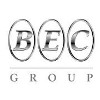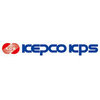Filter interviews by
J K Fenner Interview Questions and Answers
19 Interview questions
HP motors refer to motors with high power output, typically used in industrial applications.
HP stands for horsepower, a unit of power measurement
HP motors are commonly used in heavy-duty machinery and equipment
They are designed to provide high torque and speed for demanding applications
Different types of pumps include centrifugal pumps, reciprocating pumps, and rotary pumps.
Centrifugal pumps use a rotating impeller to increase the pressure of a fluid.
Reciprocating pumps use a piston or diaphragm to displace the fluid.
Rotary pumps use rotating mechanisms to move the fluid, such as gear pumps or screw pumps.
Lean manufacturing is a systematic approach to identifying and eliminating waste in the production process.
Focuses on continuous improvement
Aims to increase efficiency and reduce costs
Involves all employees in the process
Uses tools such as value stream mapping and 5S
Examples include Toyota Production System and Kaizen
Improving yield in manufacturing process involves identifying and addressing inefficiencies.
Analyze the manufacturing process to identify inefficiencies
Implement process improvements to reduce waste and increase efficiency
Train employees on new processes and techniques
Use data analysis to monitor and optimize the process
Regularly review and update the process to ensure continued improvement
I have extensive experience in managing and conducting third party audits.
I have managed and conducted third party audits for various clients in different industries
I am well-versed in audit standards and regulations such as ISO, SOC, and HIPAA
I have developed and implemented audit plans and procedures to ensure compliance and identify areas for improvement
I have also provided recommendations and guidance to clien...
I have extensive experience in conflict resolution and have developed effective communication and negotiation skills.
I have successfully resolved conflicts between team members by facilitating open communication and active listening.
I have implemented conflict resolution training programs for employees to improve their conflict management skills.
I have utilized mediation techniques to resolve conflicts between dep...
Process validation is the documented evidence that a process is capable of consistently producing a product that meets its predetermined specifications and quality attributes.
Process validation ensures that the manufacturing process is reliable and consistent
It helps to identify and control potential sources of variability in the process
It ensures that the product meets its predetermined specifications and quality...
My approach to product development is to prioritize customer needs, collaborate with cross-functional teams, and iterate quickly based on feedback.
Prioritize customer needs and pain points
Collaborate with cross-functional teams including design, engineering, and marketing
Iterate quickly based on feedback from customers and stakeholders
Use agile development methodologies to ensure flexibility and adaptability
Conduc...
Productivity improvement is necessary for achieving organizational goals and staying competitive in the market.
Increases efficiency and reduces costs
Improves quality of products/services
Enhances customer satisfaction
Boosts employee morale and motivation
Allows for innovation and growth
Examples: Lean Six Sigma, automation, training and development programs
OEE (Overall Equipment Efficiency) is calculated by multiplying Availability, Performance, and Quality percentages.
Calculate Availability by dividing Operating Time by Planned Production Time.
Calculate Performance by dividing Actual Production by Maximum Production.
Calculate Quality by dividing Good Units Produced by Total Units Produced.
Multiply the Availability, Performance, and Quality percentages to get the OE...
J K Fenner Interview Experiences
30 interviews found
- Q1. What is your current job profile?
- Ans.
I currently lead engineering teams to develop innovative solutions, ensuring project delivery aligns with strategic goals.
Oversee multiple engineering projects, ensuring they meet quality standards and deadlines.
Collaborate with cross-functional teams to integrate engineering solutions with business objectives.
Implement process improvements that increased team efficiency by 20% over the last year.
Mentor junior engineer...
- Q2. What are the growth prospects for this position?
- Ans.
This position offers significant growth through leadership opportunities, skill enhancement, and strategic project involvement.
Leadership Development: Opportunities to lead cross-functional teams and mentor junior engineers.
Skill Enhancement: Access to advanced training programs in emerging technologies, such as AI and machine learning.
Strategic Involvement: Participation in high-impact projects that influence company ...
- Q3. What is your location preference for work?
- Ans.
I prefer a flexible work location that balances collaboration and personal productivity, ideally a hybrid model.
I thrive in environments that allow for both in-office collaboration and remote work, enhancing productivity.
For example, working in a city with a strong tech community can foster networking opportunities.
I appreciate locations with access to resources like innovation hubs or engineering meetups.
A hybrid mode...
Interview Preparation Tips
I appeared for an interview in May 2025, where I was asked the following questions.
- Q1. Can you provide an introduction about yourself?
- Ans.
Dynamic professional with a strong background in engineering and a passion for innovation and teamwork.
Education: Bachelor's degree in Mechanical Engineering from XYZ University.
Experience: 5 years in product development at ABC Corp, focusing on improving efficiency.
Skills: Proficient in CAD software and project management tools.
Achievements: Led a team that reduced production costs by 15% through process optimization.
...
- Q2. What are the reasons for choosing to work at this company?
- Ans.
I am drawn to JK Fenner for its innovation, commitment to quality, and strong values in the manufacturing sector.
Innovative Products: JK Fenner is known for its cutting-edge technology in manufacturing belts and other products, which excites me.
Commitment to Quality: The company's dedication to high-quality standards aligns with my personal values and professional goals.
Strong Company Culture: I appreciate the emphasis...
Interview Preparation Tips
(1 Question)
- Q1. Mostly technical , statistical and stretagy related questions were arised.
(1 Question)
- Q1. Salary expectations and relocation
I applied via Recruitment Consulltant and was interviewed in Oct 2024. There was 1 interview round.
(2 Questions)
- Q1. Self Introduction
- Q2. About previous company experience
Interview Preparation Tips
Supportive Environment.
Growth Opportunities.
I applied via Walk-in and was interviewed in Mar 2024. There was 1 interview round.
(5 Questions)
- Q1. Production department
- Q2. Production supervisor
- Q3. Hr solutions management
- Q4. Manager solutions
- Q5. Gm head of the department
Interview Preparation Tips
I applied via Approached by Company and was interviewed in Apr 2024. There was 1 interview round.
(2 Questions)
- Q1. REGARDING RUBBERS AND POLYMER RELATED QUESTIONS
- Q2. REGARDING 5S AND SAFETY MEASURES AND TPM POLICIES
Interview Preparation Tips
General awareness & mental ability
(2 Questions)
- Q1. About industry & product knowledge
- Q2. About role & function
Interview Preparation Tips
I applied via Campus Placement and was interviewed in Feb 2024. There were 2 interview rounds.
General topics/current affairs
(2 Questions)
- Q1. Introduce yourself
- Ans.
I am a passionate and experienced software engineer with a background in computer science.
Experienced software engineer
Background in computer science
Passionate about technology
- Q2. Projects you have worked ?
- Ans.
I have worked on various projects including website development, mobile app development, and data analysis.
Developed a responsive e-commerce website using HTML, CSS, and JavaScript
Created a mobile app for tracking fitness goals using React Native
Conducted data analysis on customer feedback to improve product features
Interview Preparation Tips
I applied via Campus Placement
(1 Question)
- Q1. What you yourself in 5years
- Ans.
In 5 years, I see myself as a successful entrepreneur running my own business and making a positive impact in the community.
Running a successful business in the field of technology or sustainability
Expanding my business to reach a global audience
Engaging in philanthropic activities to give back to the community
(2 Questions)
- Q1. About Yourself & job
- Q2. Why Leave the job
- Ans.
Seeking new challenges and growth opportunities
Looking for a new challenge to further develop my skills and experience
Seeking opportunities for career advancement and growth
Want to explore new industries or markets
Desire for a change in company culture or work environment
Top trending discussions






J K Fenner Interview FAQs
The duration of J K Fenner interview process can vary, but typically it takes about less than 2 weeks to complete.
Tell us how to improve this page.
J K Fenner Interviews By Designations
- J K Fenner Production Supervisor Interview Questions
- J K Fenner Senior Officer Interview Questions
- J K Fenner Graduate Engineer Trainee (Get) Interview Questions
- J K Fenner Officer Interview Questions
- J K Fenner Assistant Manager/Manager -(Technical) Interview Questions
- J K Fenner Sales Officer Interview Questions
- J K Fenner Sales Head Interview Questions
- J K Fenner Production Engineer Interview Questions
- Show more
Interview Questions for Popular Designations
Overall Interview Experience Rating
based on 33 interview experiences
Difficulty level
Duration
Interview Questions from Similar Companies
J K Fenner Reviews and Ratings
based on 502 reviews
Rating in categories
|
Assistant Manager
105
salaries
| ₹5 L/yr - ₹11 L/yr |
|
Senior Officer
62
salaries
| ₹4.3 L/yr - ₹9.7 L/yr |
|
Deputy Manager
50
salaries
| ₹8 L/yr - ₹14 L/yr |
|
Manager
35
salaries
| ₹12 L/yr - ₹23 L/yr |
|
Quality Engineer
31
salaries
| ₹1.8 L/yr - ₹5.5 L/yr |

Saudi Binladin Group

Bahwan Engineering

Amara Raja Infra

Eversendai
- Home >
- Interviews >
- J K Fenner Interview Questions













